
We often have these beautiful birds of prey at the Airport. They love to snack on pigeons and other tidbits that roam and roost adjacent to the Airport perimeter. I have to admit that these are probably one of my favorite birds. Please check out
That's My World where people from all over the world share pictures of their part of the world.
The Red-tailed Hawk (Buteo jamaicensis) is a medium-sized bird of prey, one of three species colloquially known in the United States as the "chickenhawk," though it rarely preys on chickens. It breeds throughout almost all North America from western Alaska and northern Canada to as far south as Panama and the West Indies, and is one of the most common buteos in North America. There are fourteen recognized subspecies, which vary in appearance and range. It is one of the largest members of the genus Buteo in North America, typically weighing from 690 to 1600 grams (1.5 to 3.5 pounds) and measuring 45–65 cm (18 to 26 in) in length, with a wingspan from 110 to 145 cm (43 to 57 in). The Red-tailed Hawk displays sexual dimorphism in size, as females are about 25% heavier than males.

A male Red-tailed Hawk may weigh from 690 to 1300 grams (1.5 to 3.5 pounds) and measure 45–56 cm (18 to 22 in), while a female can weigh between 900 and 2000 grams (2 and 4.4 pounds) and measure Body size, 18 to 26 in (45 to 65 cm); Wingspan,is about 3.8 to 4.3 (1.1 to 1.3 m) (20 to 26 in) in length. As is the case with many raptors the Red-tailed Hawk displays sexual dimorphism in size, as females are 25% larger than males. The wingspan is from 110 to 145 cm (43 to 57 in).
Red-tailed Hawk plumage can be variable, depending on the subspecies and the region. These color variations are morphs, and are not related to molting.
The western North American population, B. j. calurus, is the most variable subspecies and has three color morphs: light, dark, and intermediate or Rufus. The dark and intermediate morphs constitute 10–20% of the population.
Though the markings and hue vary, the basic appearance of the Red-tailed Hawk is consistent. The underbelly is lighter than the back and a dark brown band across the belly, formed by vertical streaks in feather patterning, is present in most color variations. The red tail, which gives this species its name, is uniformly brick-red above and pink below.The bill is short and dark, in the hooked shape characteristic of raptors. The cere, the legs, and the feet of the Red-tailed Hawk are all yellow.
Immature birds can be readily identified at close range by their yellowish irises. As the bird attains full maturity over the course of 3–4 years, the iris slowly darkens into a reddish-brown hue. In both the light and dark morphs, the tail of the immature Red-tailed Hawk are patterned with numerous darker bars.

In flight, this hawk soars with wings in a slight dihedral, flapping as little as possible to conserve energy. Active flight is slow and deliberate, with deep wing beats. In wind, it occasionally hovers on beating wings and remains stationary above the ground. When soaring or flapping its wings, it typically travels from 20 to 40 mph (64 km/h), but when diving may exceed 120 mph (190 km/h). When the Red-tailed Hawk walks, its steps are slow and awkward.
The Red-tailed Hawk is generally non-aggressive toward people and toward other birds. It is commonly harassed by crows, magpies, owls, other hawks, and even songbirds over territorial disputes, though it is generally not injured. When threatened by a human intruder, a Red-tailed Hawk will generally flee rather than defend its nest.
The cry of the Red-tailed Hawk is a two to three second hoarse, rasping scream, described as kree-eee-ar, which begins at a high pitch and slurs downward. This cry is often described as sounding similar to a steam whistle. It frequently vocalizes while hunting or soaring, but vocalizes loudest in annoyance or anger, in response to a predator or a rival hawk's intrusion into its territory. At close range, it makes a croaking "guh-runk". Young hawks may utter a wailing klee-uk food cry when parents leave the nest.
Because of its robust crispness, a certain recording of the cry of the Red-tailed Hawk is a cliché cinematic sound effect. This high, piercing scream is often featured in the background of adventure movies to give a sense of wilderness to the scene. However, the cry is often inaccurately used for the Bald Eagle, whose own vocalizations are quite different and less robust.

The Red-tailed Hawk is carnivorous, and an opportunistic feeder. Its diet is mainly small mammals, but it also includes birds and reptiles. Prey varies with regional and seasonal availability, but usually centers on small rodents. Additional prey include rabbits, snakes, waterfowl, bats, shrews, crustaceans, insects, rodents, and fish.
The Red-tailed Hawk hunts primarily from an elevated perch site, swooping down from a perch to seize prey, catching birds while flying, or pursuing prey on the ground from a low flight.
Prey range in size from beetles to White-tailed Jackrabbits, which are double the weight of most Red-tails. In captivity in winter, an average Red-tail will eat about 135 g (4-5 oz) daily.The Great Horned Owl occupies a similar ecological niche nocturnally, taking similar prey. Competition may occur between the Red-tailed Hawk and the Great Horned Owl during twilight.
The Red-tailed Hawk reaches sexual maturity at two years of age. It is monogamous, mating with the same individual for many years. In general, the Red-tailed Hawk will only take a new mate when its original mate dies. The same nesting territory may be defended by the pair for years. During courtship, the male and female fly in wide circles while uttering shrill cries. The male performs aerial displays, diving steeply, and then climbing again. After repeating this display several times, he sometimes grasps her talons briefly with his own. Courtship flights can last 10 minutes or more. Copulation often follows courtship flight sequences, although copulation frequently occurs in the absence of courtship flights.
In copulation, the female, when perched, tilts forward, allowing the male to land with his feet lodged on her horizontal back. The female twists and moves her tail feathers to one side, while the mounted male twists his cloacal opening around the to the female's cloaca. Copulation lasts 5 to 10 seconds and during pre-nesting courtship in late winter or early spring can occur numerous times each day.
In the same period, the pair constructs a stick nest in a large tree 4 to 21 m off the ground or on a cliff ledge 35 m (115 ft) or higher above the ground, or may nest on man-made structures. The nest is generally 71 to 97 cm (28 to 38 inches) in diameter and can be up to 90 cm (3 ft) tall. The nest is constructed of twigs, and lined with bark, pine needles, corn cobs, husks, stalks, aspen catkins, or other plant lining matter.
Great Horned Owls compete with the Red-tailed Hawk for nest sites. Each species has been known to kill the young and destroy the eggs of the other, but in general, both species nest in adjacent or confluent territories without conflict. Great Horned Owls are incapable of constructing nests and typically expropriate existing Red-tail nests. Great Horned Owls begin nesting behaviors much earlier than Red-tails, often as early as December. Red-tails are therefore adapted to constructing new nests when a previous year's nest has been overtaken by owls or otherwise lost. New nests are typically within a kilometer or less of the previous nest. Often, a new nest is only a few hundred meters or less from a previous one.
A clutch of 1 to 3 eggs is laid in March or April, depending upon latitude. Clutch size depends almost exclusively on the availability of prey for the adults. Eggs are laid approximately every other day. The eggs are usually about 60 x 47 mm (2.4 x 1.9 in). They are incubated primarily by female, with the male substituting when the female leaves to hunt or merely stretch her wings. The male brings most food to the female while she incubates. After 28 to 35 days, the eggs hatch over 2 to 4 days; the nestlings are altricial at hatching. The female broods them while the male provides most of the food to the female and the young, which are known as eyasses (pronounced "EYE-ess-ess"). The female feeds the eyasses after tearing the food into small pieces. After 42 to 46 days, the eyasses begin to leave the nest on short flights. The fledging period lasts up to 10 weeks, during which the young learn to fly and hunt. (excerpts taken from Wikipedia)
 Small mountain streams, many of which hold native brook trout join to form the Calfpasture River which merges with the Little Calfpasture River just west of Goshen Pass. There the Maury River is born. The water of the two major tributaries barely have time to mingle before the Maury enters the famous Goshen Pass and begins a turbulent run downstream as much as 20 feet in one 100 yard stretch of the river. Once through the Pass, the river drops into the valley, continuing toward Lexington at a fast pace. It maintains that rate of flow, except where man intervened, until it enters the James River at Glasgow.
Small mountain streams, many of which hold native brook trout join to form the Calfpasture River which merges with the Little Calfpasture River just west of Goshen Pass. There the Maury River is born. The water of the two major tributaries barely have time to mingle before the Maury enters the famous Goshen Pass and begins a turbulent run downstream as much as 20 feet in one 100 yard stretch of the river. Once through the Pass, the river drops into the valley, continuing toward Lexington at a fast pace. It maintains that rate of flow, except where man intervened, until it enters the James River at Glasgow. Unlike most Virginia Rivers, the Maury is contained entirely within Rockbridge County. It deos not cross any county lines. While nature designed the Maury as a fast flowing stream from its headwaters to the confluence with the James, several dams have changed its personality. A pair of dams, an eight-foot one in Lexington (pictured here) and a 20-foot one near Buena Vista impound the fast water forming stretches of calm water behind them.
Unlike most Virginia Rivers, the Maury is contained entirely within Rockbridge County. It deos not cross any county lines. While nature designed the Maury as a fast flowing stream from its headwaters to the confluence with the James, several dams have changed its personality. A pair of dams, an eight-foot one in Lexington (pictured here) and a 20-foot one near Buena Vista impound the fast water forming stretches of calm water behind them. The Maury River is fairly short by most standards. From the confluence of the Calfpasture and the Little Calfpasture Rivers, it is approximately 30 miles to its confluence with the James River. Enroute it brushes the charming cities of Lexington and Buena Vista. While there is challenging whitewater such as Devil's Kitchen and other rapids too difficult for the novice to tackle, the river offers plenty of Class I and II water that the average canoeist or kayaker can handle. In addition to the fast water at Goshen Pass, there are the remains of Goose Neck Dam downstream from Buena Vista that require care. This is Class II+ water.
The Maury River is fairly short by most standards. From the confluence of the Calfpasture and the Little Calfpasture Rivers, it is approximately 30 miles to its confluence with the James River. Enroute it brushes the charming cities of Lexington and Buena Vista. While there is challenging whitewater such as Devil's Kitchen and other rapids too difficult for the novice to tackle, the river offers plenty of Class I and II water that the average canoeist or kayaker can handle. In addition to the fast water at Goshen Pass, there are the remains of Goose Neck Dam downstream from Buena Vista that require care. This is Class II+ water. The names of rivers often raise questions from serious river lovers. How did the river get that name? Some times there is an explanation, some times none. There is, however, an explanation for this one. The Maury River was first called the North River of the James. It enters the James River from the north. But then came Matthew Fontaine Maury, a professor at Virginia Military Institute in the years following the Civil War during which he had served in the Confederate forces. In those postwar years he fell in love with Goshen Pass and requested that at his death his remains be carried through the pass and on to Richmond for burial. An honor guard of Virginia Military Institute Cadets carried out his wish. A monument in his hor now rests on the side of Virginia Primary Highway 39 where it passed through Goshen Pass. And the river was named for him.
The names of rivers often raise questions from serious river lovers. How did the river get that name? Some times there is an explanation, some times none. There is, however, an explanation for this one. The Maury River was first called the North River of the James. It enters the James River from the north. But then came Matthew Fontaine Maury, a professor at Virginia Military Institute in the years following the Civil War during which he had served in the Confederate forces. In those postwar years he fell in love with Goshen Pass and requested that at his death his remains be carried through the pass and on to Richmond for burial. An honor guard of Virginia Military Institute Cadets carried out his wish. A monument in his hor now rests on the side of Virginia Primary Highway 39 where it passed through Goshen Pass. And the river was named for him. Obviously the Maury River gets a lot of attention from whitewater canoeists and kayakers, primarily becuase of the Goshen Pass wild water. Most of this kind of river recreational use occurs during the colder months when the river is high. During the dry months of summer the river in this section is too low to canoe or even use a kayak. The only exception comes when heavy rainfall in the watershed of the river raise its level significantly, even if only for a day or so.
Obviously the Maury River gets a lot of attention from whitewater canoeists and kayakers, primarily becuase of the Goshen Pass wild water. Most of this kind of river recreational use occurs during the colder months when the river is high. During the dry months of summer the river in this section is too low to canoe or even use a kayak. The only exception comes when heavy rainfall in the watershed of the river raise its level significantly, even if only for a day or so.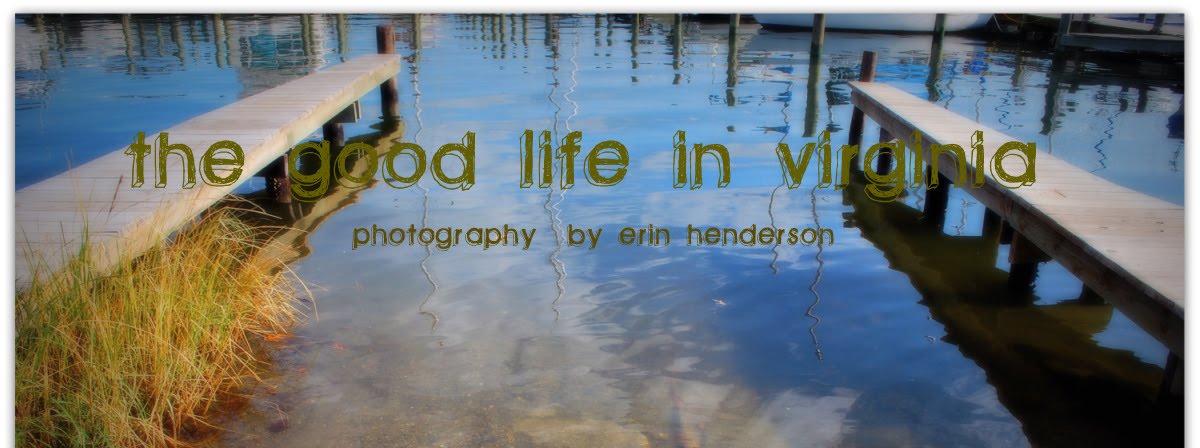





 In flight, this hawk soars with wings in a slight dihedral, flapping as little as possible to conserve energy. Active flight is slow and deliberate, with deep wing beats. In wind, it occasionally hovers on beating wings and remains stationary above the ground. When soaring or flapping its wings, it typically travels from 20 to 40 mph (64 km/h), but when diving may exceed 120 mph (190 km/h). When the Red-tailed Hawk walks, its steps are slow and awkward.
In flight, this hawk soars with wings in a slight dihedral, flapping as little as possible to conserve energy. Active flight is slow and deliberate, with deep wing beats. In wind, it occasionally hovers on beating wings and remains stationary above the ground. When soaring or flapping its wings, it typically travels from 20 to 40 mph (64 km/h), but when diving may exceed 120 mph (190 km/h). When the Red-tailed Hawk walks, its steps are slow and awkward. 





































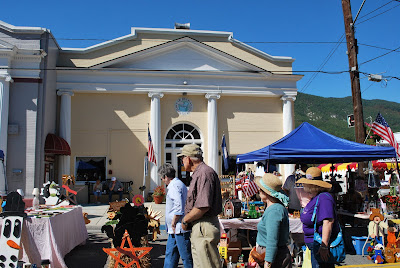





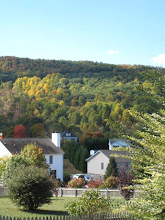




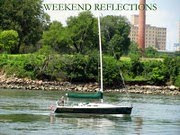
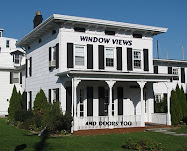

















.jpg)
